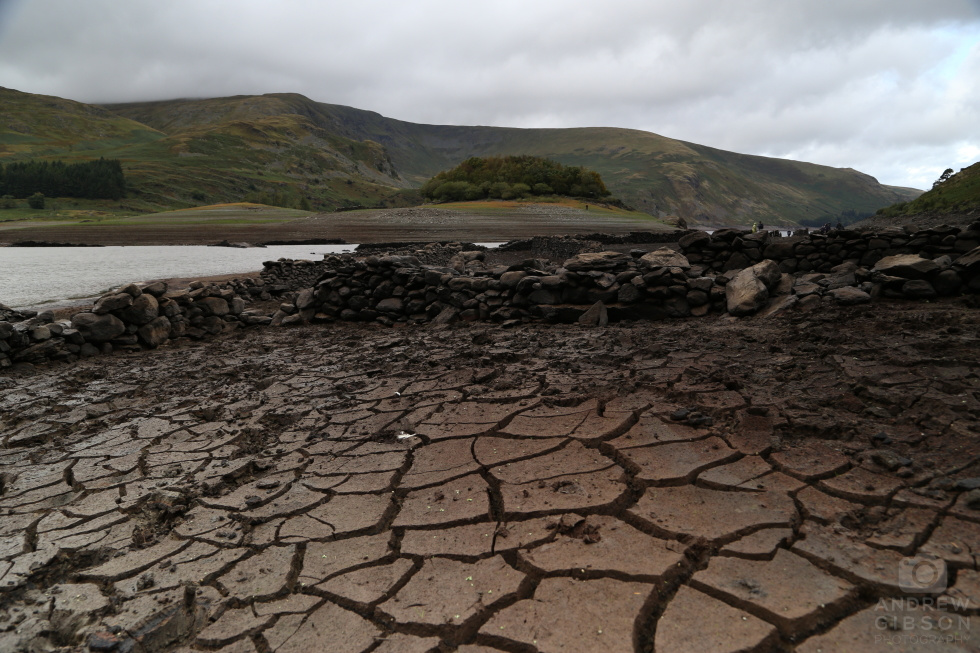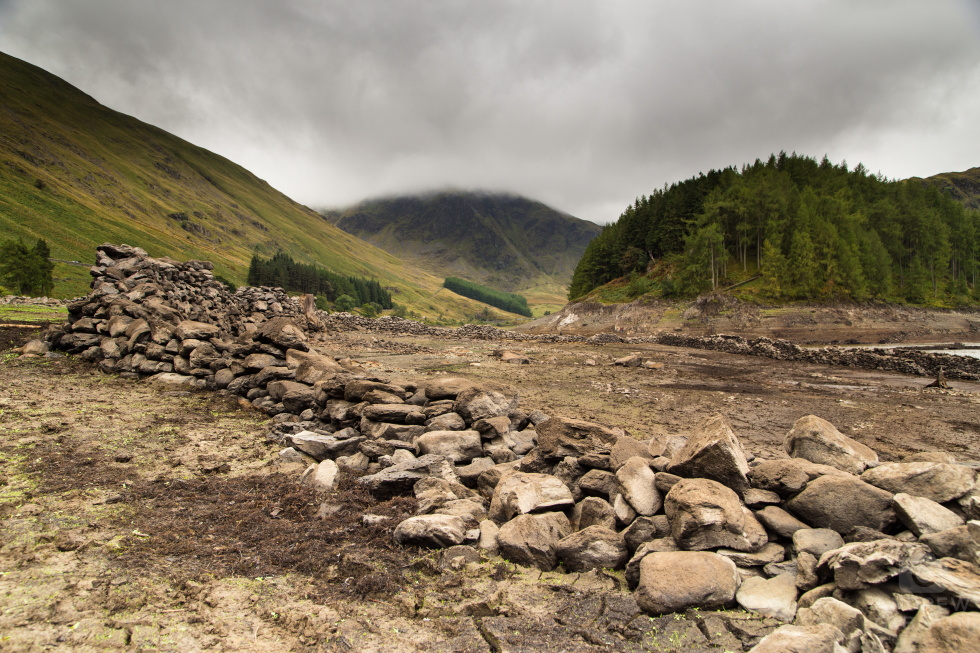For as long as I can remember there’s been one question that eventually drifts in to mind whenever there’s been an unusually dry summer: I wonder if Mardale has reappeared?
I was only a small boy in 1984 when I first walked the dusty dry-stone walled streets of this Lake District hamlet lost from the maps since 1935. In 1995 I photographed it on film and I’ve been back a few times since then, most recently after the heatwave of 2018 – but even then the water wasn’t as low as it is now. So it was with some bemusement that after the recent drought and low water warnings I arrived to the onset of heavy rain and gusty winds to venture down once more this week…
It was busy. Clearly everybody had the same idea and there were some extremely wet looking people coming back up the embankment. One was carrying a bike over his shoulder, though it was anyone’s guess as to what kind of surface might be anything like ride-able down there. A bedraggled lad with no shirt on looked like he’d been for a swim in his jeans, while others appeared covered in mud to one degree or another. Gingerly, I descended the slippery path to see for myself.

At the bottom the earth was cracked, but the recent inclemency had given it the kind of consistency you’d expect from wet clay. It was sticky and claggy, and it covered everything it touched – including my tripod as I knocked it over, forcing the decision to up the ISO and shoot hand-held while carefully avoiding the stickier bits.
The residents of Mardale Green had been relocated in the 1930s when the Manchester Corporation dammed Hawswater to create a vaster expanse of water that consequently reached further up this glacial valley and would submerge their homes. Construction took six years from 1929 and resulted in a new reservoir 3.7 miles long – 1.2 miles longer, and 29 metres deeper than it had been naturally.
The buildings were blown up in a practice exercise by the Royal Engineers, though the church was spared this fate and was more sensitively dismantled, its stone re-used on the reservoir’s draw-off tower that now stands at the point to where the original high water extended.
A 17th Century bridge remains intact crossing Mardale Beck but the water wasn’t quite low enough to walk on it this time – unless you braved the mud to walk around the edge and approach it from the far side. You can just see it in the background of the picture below:

Stone walls that mark out fields and roads are still evident over 85 years later, along with piles of rubble where the buildings once stood. The stumps of cut-off trees can also be found where they would normally be under water.

The rocky sides of the normally deep reservoir appear like bands around the sides and demonstrate just how low the water levels have dropped in a year where most people worked from home and holidayed in the UK, putting more pressure on the already depleted stocks.
The current owner – United Utilities – estimates Haweswater to be at just 40% capacity, whereas normal September levels would be expected around the 70% mark.

Remarkably given how wet it was on arrival, the rain held off for the whole hour or so I spent down there capturing the scenes that until recently I’d say were uncommon. But with more and more extreme weather ‘events’ you wonder how much more often this will be possible in the future – and indeed how long it will take to reach 100% capacity again.

Had it not been so windy I’d have flown the drone around but it didn’t even seem worth taking it out of the car in the dull and blustery conditions. I would also have liked to walk round to photograph the draw-off tower, but the sides of a reservoir aren’t the easiest things to navigate in wet conditions, especially when there’s a good mile or so each way to do it. That aside though I left quite happy with the overcast and moody atmospheric shots I’d captured of this drowned world, rather different to the normal kind of abandoned places I frequent.
I wonder when next we will get the chance to walk these streets…

Comments
Glen Adair
Michelle
Andrew
Denise
Andrew